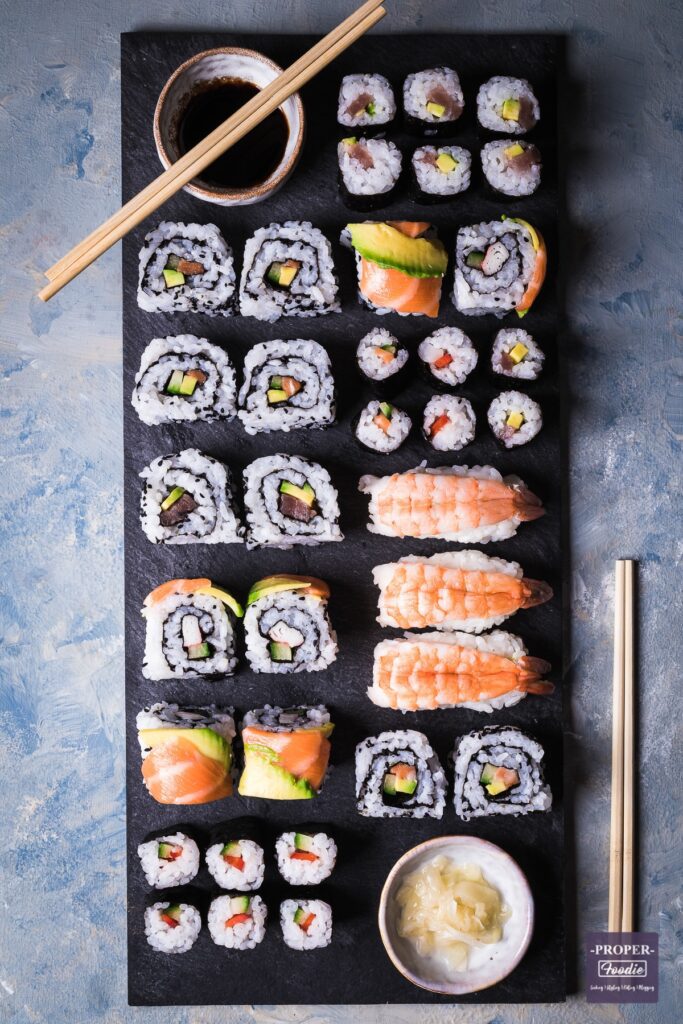Sushi is a popular Japanese dish made from seasoned rice topped with seafood, vegetables, or egg. To make sushi, you will need various ingredients such as sushi rice, nori (dried seaweed sheets), sashimi-grade seafood, and vegetables. To prepare sushi rice, rinse the rice, add water, boil it, then let it sit for 10 minutes, and finally add the vinegar mixture to the cooked rice. You can use a bamboo mat or your hands to create sushi rolls such as classic Nigiri sushi, Maki sushi, and Uramaki sushi. When eating sushi, use chopsticks or your hands, dip it slightly in soy sauce, and eat pickled ginger to cleanse your palate.
The Ultimate Sushi Guide: Tips for Choosing and Eating Japanese Sushi
Introduction
Sushi is a traditional Japanese dish that originated in the 19th century. It is essentially bite-sized pieces of seasoned rice topped with various types of seafood, vegetables, or egg.
In recent years, sushi has become a popular food choice in many countries, thanks to its unique taste and health benefits. But choosing and eating sushi can be overwhelming, especially if you are new to Japanese cuisine. Therefore, in this article, we will provide you with a step-by-step guide and recipe for the ultimate sushi experience.
Step 1: Choosing Sushi Ingredients
To make sushi, you need several ingredients, including:
– Sushi Rice: A short-grain rice that is sticky and slightly sweet in taste.
– Nori: Dried seaweed sheets that are used to wrap sushi rolls.
– Sashimi-grade Seafood: The freshest possible seafood such as salmon, tuna, crab, or prawn.
– Vegetables: Avocado, cucumber, carrot, and asparagus, among others.
– Other toppings: Wasabi, pickled ginger, and soy sauce.
Step 2: Preparing Sushi Rice
Rice is an essential element of sushi. To make sushi rice, follow these steps:
– Rinse the rice with cold water until the water runs clear.
– Place the rice in a pot with a tight-fitting lid, add water, and bring to a boil.
– Simmer the rice for about 15 minutes, then turn off the heat and let it sit for 10 minutes.
– In a separate pan, heat rice vinegar, sugar, and salt, stirring until the sugar and salt melt.
– Add the vinegar mixture to the cooked rice and stir well, making sure that each grain is coated with the vinegar mixture.
Step 3: Making Sushi Rolls
To make sushi, you can use a bamboo mat or your hands to create different styles of sushi rolls:
– Classic Nigiri sushi: Grasp a small handful of sticky rice, shape it into an oval, and top it with a slice of fresh seafood.
– Maki sushi: Place a sheet of nori shiny side down, spread a layer of sushi rice on top, and add your chosen fillings in the center. Roll the nori tightly around the fillings using the bamboo mat to shape the roll.
– Uramaki sushi: It is similar to Maki sushi, but the rice is outside, and the nori is inside.
Step 4: Eating Sushi
When eating sushi in a traditional Japanese restaurant, you will typically be seated at a sushi bar. The sushi chef will prepare a variety of sushi and place it in front of you. Here are some tips to follow when eating sushi:
– Use chopsticks or your hands to pick up sushi pieces, but never your fork.
– Dip the sushi slightly in soy sauce, but avoid using too much as it can overpower the delicate flavors of the sushi.
– Add a small amount of wasabi to your soy sauce or apply it directly to the sushi. Wasabi provides a pungent flavor that complements the sushi.
– Eat pickled ginger to cleanse your palate between different sushi pieces.
– Take small bites of sushi and savor the flavors.
Conclusion
Now that you have our step-by-step guide and recipe for the ultimate sushi experience, you are ready to start exploring the world of sushi. Remember to choose the freshest ingredients, prepare the sushi rice correctly, and enjoy the unique flavors of each sushi piece. Happy eating!
